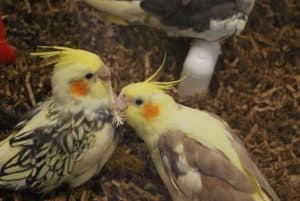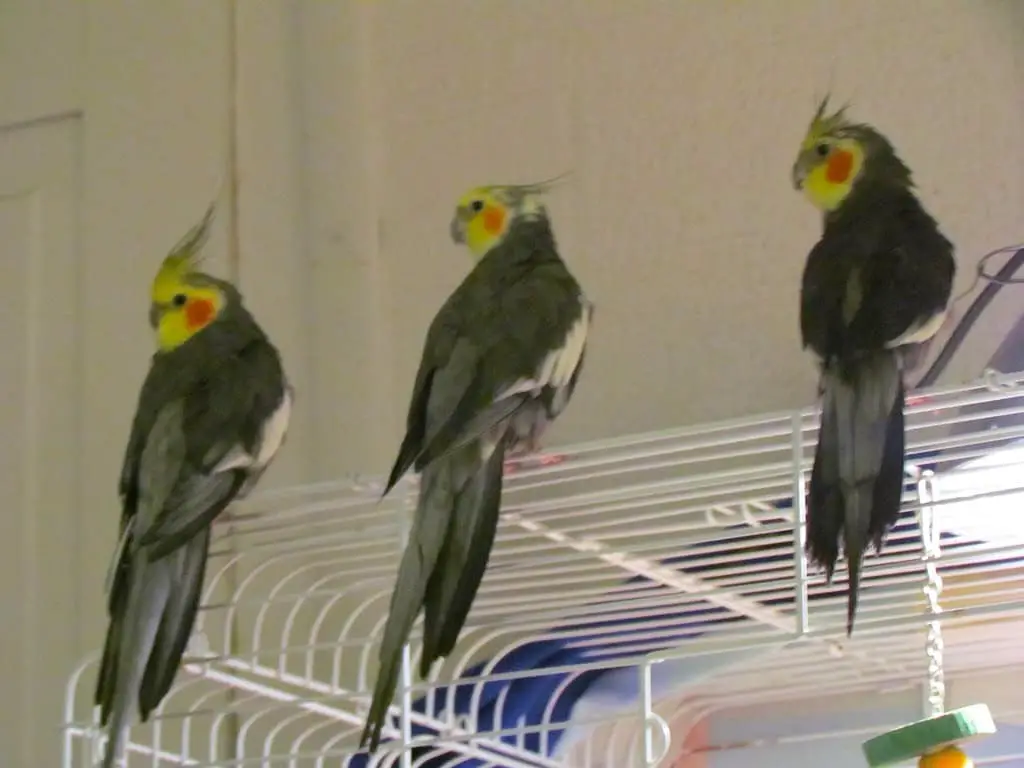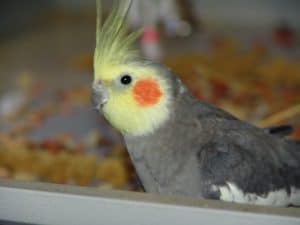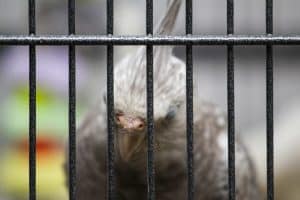Imagine you’re planning your next getaway and can’t bear the thought of leaving your feathered friend behind. Bringing your cockatiel on a vacation might just be the perfect solution to ensure everyone in the family enjoys the break. Traveling with a pet bird isn’t as daunting as it sounds, especially with a bit of preparation and the right tips at your disposal.
Preparing Your Cockatiel for Vacation

Traveling with your cockatiel involves thoughtful preparation to ensure a safe and enjoyable experience for your feathered friend. This section outlines the essential steps you need to take before hitting the road with your pet bird.
Health Check and Essentials
Before you embark on your vacation, scheduling a visit to the vet is critical. Ensure your cockatiel gets a clean bill of health to travel. Obtain any necessary vaccinations and discuss your travel plans with the vet to receive tailored advice based on your cockatiel’s health requirements. Additionally, prepare a travel kit including your bird’s regular food, a spray bottle for misting, any medications, and familiar toys to keep them comfortable and stress-free.
Choosing the Right Travel Cage
Selecting an appropriate travel cage is paramount. The cage should be sturdy yet comfortable, large enough for your cockatiel to move around freely but small enough to fit securely in your vehicle. Ensure it has proper ventilation and is equipped with a secure latch to prevent escapes. Opt for cages specifically designed for travel, as these often feature additional safety measures like reinforced doors or seat belt slots for car travel.
Getting Your Cockatiel Used to the Travel Hat
Acclimatizing your cockatiel to its travel cage can minimize stress during the trip. Start by placing the travel cage near your cockatiel’s regular cage, allowing them to explore it at their own pace. Gradually increase the time your cockatiel spends inside, adding familiar toys and treats to make the travel cage feel like a safe, enjoyable space. Practicing short, simulated trips around the house can also help your bird adjust to being in the cage for longer periods.
Travel Options for Your Cockatiel

Taking your cockatiel on vacation requires considering the best travel options to ensure its comfort and safety. Here’s how you can transport your feathered friend by car or plane effectively.
Traveling by Car
Traveling by car is often the easiest and most controllable option when taking your cockatiel on a vacation. Start by selecting a secure, well-ventilated travel cage that can comfortably fit in the vehicle. Ensure the cage is stable during the journey, using seat belts or other secure straps to prevent it from shifting. It’s essential to maintain a comfortable temperature in the car, avoiding any direct sunlight on the bird’s cage which can cause overheating. Additionally, plan regular stops every two to three hours to check on your cockatiel and provide it with water and a chance to stretch. Remember, never leave your cockatiel alone in the car, especially in hot weather.
Flying with a Cockatiel
Flying can be more challenging but is feasible with proper preparation. First, check the airline’s pet policy to ensure they accommodate birds and understand the requirements for a cabin travel cage. Most airlines require a health certificate issued within ten days of travel, so schedule a visit to the vet well in advance.
On the day of your flight, arrive early to ensure you and your cockatiel can pass through security smoothly. During the flight, keep the travel cage under the seat in front of you to monitor and reassure your cockatiel. Keep disturbances to a minimum to help your pet stay calm and quiet throughout the journey.
Ensuring Comfort and Safety During the Trip
Traveling can be stressful for pets, especially cockatiels, due to the change in environment and routine. When planning to take your cockatiel on a vacation, it’s crucial to prioritize their comfort and safety throughout the journey. The subsequent suggestions under each subheading will help you manage your bird’s stress and maintain their routine, ensuring a smoother trip for both of you.
Managing Stress and Anxiety
To manage your cockatiel’s stress and anxiety during travel, consider these effective strategies:
-
Acclimate Your Bird to the Travel Cage: Familiarize your cockatiel with the travel cage weeks before your trip. Place the cage in your living area and encourage your bird to spend time in it by using treats and toys. This familiarity helps reduce anxiety when you finally hit the road.
-
Create a Calming Environment: Use a cover over the travel cage to create a sense of security for your cockatiel. The cover also helps to block out overwhelming sights that might cause stress. Additionally, playing soft, soothing music can help keep your bird calm during transit.
-
Maintain a Comfortable Temperature: Cockatiels are sensitive to temperature changes. Ensure the vehicle is well-ventilated and maintain a steady temperature, avoiding direct sunlight on the cage which can cause overheating.
Keeping a Routine on the Road
Maintaining a routine while traveling is key to keeping your cockatiel comfortable:
-
Adhere to Regular Feeding Times: Stick to the usual feeding schedule as much as possible. Bring along your bird’s usual food and some familiar treats to maintain a sense of normalcy and comfort.
-
Incorporate Familiar Activities: Even while on the road, try to replicate parts of your bird’s daily routine. Whether it’s playing with favorite toys or having some out-of-cage time, this can significantly help in reducing stress.
-
Plan for Regular Stops: If traveling by car, plan to stop every couple of hours to check on your cockatiel and give it some time out of the cage, if safe to do so. This break allows your pet to stretch and relax, making the travel less cumbersome.
Activities for Your Cockatiel While on Vacation

Incorporating fun and safe activities for your cockatiel during a vacation keeps them entertained and eases their adaptation to new environments. This section provides specific activities to engage your pet bird while ensuring they enjoy the trip as much as you do.
Engaging Your Bird in New Environments
Introducing your cockatiel to new surroundings can be exciting for them. Explore the new environment together, allowing your bird to experience different sights and sounds under careful supervision. Bring along favorite toys and introduce a few new ones to mentally stimulate your cockatiel.
If your accommodation has a safe, enclosed space free of hazards—like an enclosed balcony or a large bathroom—you can set up a temporary play area with familiar items from home, such as their usual perch and some foraging toys.
Another great way to engage them is by taking advantage of the natural daylight in your hotel room or rental; ensure windows are secure, and give your bird some supervised time near the window to watch the world go by. Remember, direct sunlight might be too intense, so a spot with filtered light could work better, ensuring they’re comfortable.
Interaction and Play on the Go
Keeping interaction consistent is key to ensuring your cockatiel feels secure and loved, even on vacation. Dedicate specific times during the day for one-on-one interactions to maintain a routine. Simple activities like talking, singing, or whistling to your bird can significantly boost their mood and provide continuity.
Portable travel toys are essential for playtime when you’re away from home. Opt for lightweight, durable toys that can easily fit in your travel cage without taking up much space. Small puzzle toys filled with treats or favorite seeds can keep your cockatiel entertained during long travel periods or while you’re out exploring for a few hours.
Always ensure that any play sessions in unfamiliar places are closely supervised to prevent any mishaps. If your cockatiel enjoys mimicking sounds or words, practice new phrases during your trip to engage their vocal skills and provide mental stimulation.
Emergency Preparedness for Traveling with a Cockatiel
Having a plan for emergencies is essential when traveling with your cockatiel. Consider these additional precautions:
-
Emergency Kit: Include a basic first-aid kit with items like bandages, antiseptic wipes, and a list of emergency contacts. Your vet might also recommend specific items for your bird.
-
Identification: Ensure your cockatiel has a form of identification, such as a leg band or microchip, in case they get lost.
-
Travel Health Certificate: For flying, keep a copy of the health certificate and vaccination records with you at all times.
-
Backup Plan: Have a contingency plan if your travel plans change or if you need to find alternate accommodations.
Environmental Enrichment on the Go
Keeping your cockatiel mentally and physically stimulated is crucial, even while traveling. Here are some ideas for environmental enrichment:
-
Interactive Toys: Bring a variety of interactive toys to keep your cockatiel engaged. Consider toys that encourage problem-solving or foraging.
-
Natural Branches: If possible, include some natural branches or perches from home in their travel cage. This provides a familiar and comforting environment.
-
Bird-Friendly Places: When exploring new areas, look for safe outdoor spaces where your cockatiel can enjoy some fresh air and natural sights under supervision.
-
Training Sessions: Use travel time to work on training commands or tricks. This keeps your cockatiel’s mind active and helps strengthen your bond.
Coping with Potential Behavioral Changes
Traveling can sometimes cause changes in behavior for your cockatiel. Here’s how to handle these issues:
-
Monitor Behavior: Keep an eye on your cockatiel’s behavior for any signs of stress or illness. Changes in eating habits, vocalization, or activity levels can indicate problems.
-
Provide Reassurance: Maintain a calm demeanor and offer extra comfort if your cockatiel seems anxious or out of sorts.
-
Consult a Vet: If you notice persistent behavioral changes, consult with a vet to address any underlying issues.
Final Thoughts: What to Do When You First Bring Your Cockatiel Home
Taking your cockatiel on vacation can be a delightful experience for both you and your feathered friend. By ensuring you’ve prepared thoroughly and chosen the right travel arrangements, your cockatiel will be comfortable and secure throughout the journey. Engaging them with new activities and toys while away will not only keep them entertained but also help maintain their well-being. Remember the joy isn’t just in the destination but in the shared adventures along the way. Here’s to a happy and safe trip with your bird!
Other suggested articles:
What are the first aids in case of emergency to your cockatiel?




